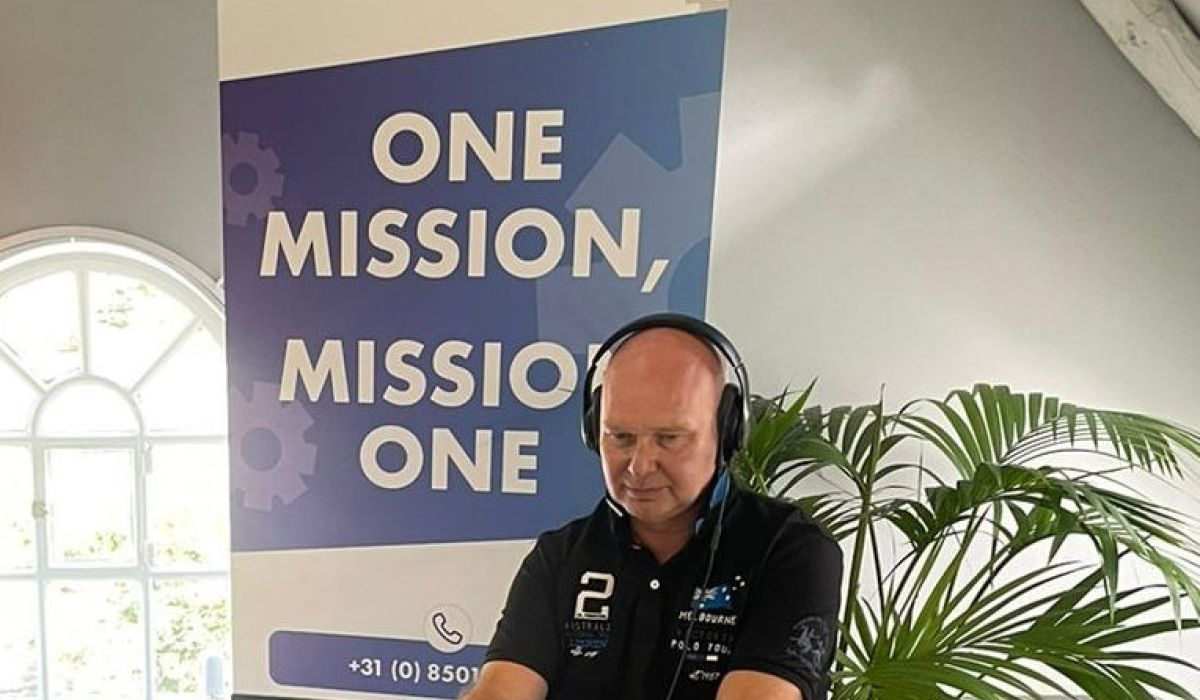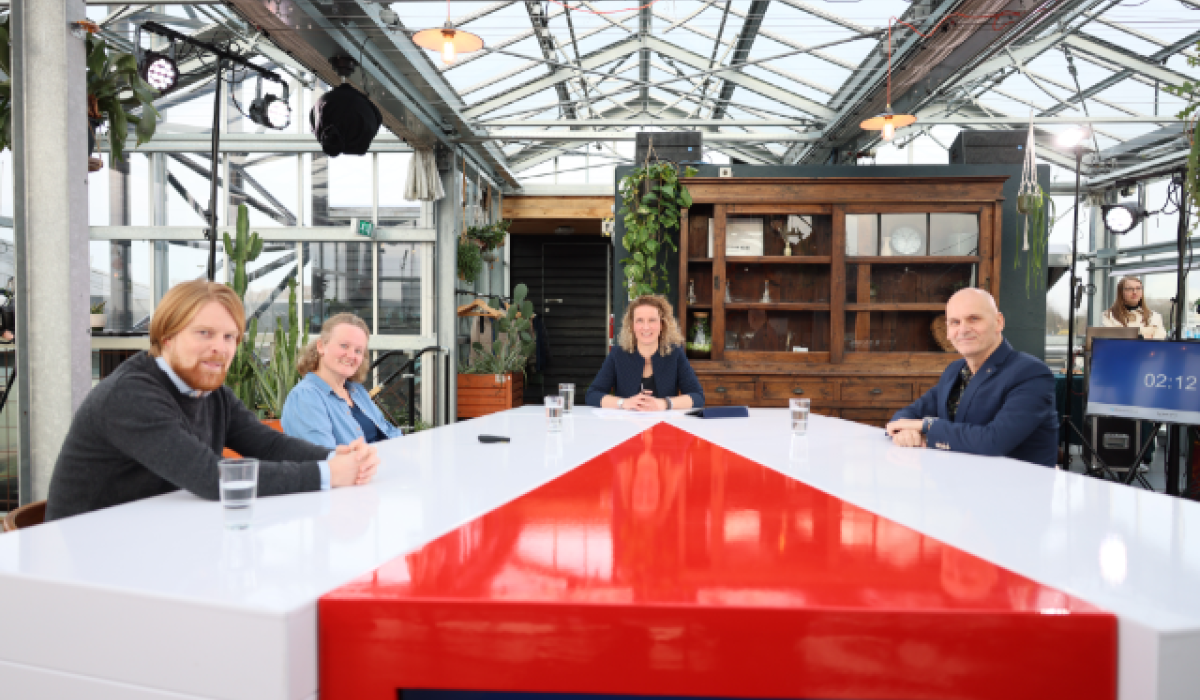
An API allows you to integrate with any platform you want
Interview with Edwin Kruitbosch of RawWorks
RawWorks is an IT company specialising in various sectors including healthcare. Connectedness, Energy and Humour are the company's core values and describe its DNA. From the 3 'tribes': Digital, Cloud and Workspace, RawWorks' specialists work together to support their relationships. From the healthcare sector, we regularly hear that integration is a problem. Now we were curious how an integration specialist thinks about this. Are there indeed limits to what is possible with IT or is the sky the limit?
Interview with Edwin Kruitbosch of RawWorks
RawWorks is an IT company specialising in various sectors including healthcare. Connectedness, Energy and Humour are the company's core values and describe its DNA. From the 3 'tribes': Digital, Cloud and Workspace, RawWorks' specialists work together to support their relationships.
From the healthcare sector, we regularly hear that integration is a problem. Now we were curious how an integration specialist thinks about this. Are there indeed limits to what is possible with IT or is the sky the limit?
You work at RawWorks and you also serve a number of healthcare organisations with your services. What is the common thread you see with these kinds of institutions?
The world of IT is changing to anything-as-code and value is being passed on to the business more than ever. For this reason, we need to reason more and more from business cases of our relationships' customers and have to put ourselves more and more in the shoes of patients, health insurers and regulators.
In healthcare, NEN 7510 certification applies with strict regulations regarding data protection of client and patient privacy. Security and privacy have become the new standard here, whereas in the past it was seen as a necessary evil. Secure emailing, with SMS confirmation, is also a topic often discussed these days.
You also work in other sectors. What are the biggest differences between healthcare in the IT field and other industries?
That's right. Besides healthcare, we have many projects in the public domain, such as education and government but also in the commercial world. We still see the financial sector as the forerunner of changes in IT. Infrastructure-as-Code was first picked up among financials and is now slowly trickling down to other sectors, including healthcare.
We hear from the market that healthcare institutions indicate that it is not always possible to integrate Webcamconsult (or other applications) or that this is difficult to do within their existing systems. From you, on the other hand, we understand that it is actually always possible. How about that?
Many healthcare organisations use a so-called virtual desktop environment to securely deliver applications to their users. Determining the right and amount of equipment required to run the virtual desktop environment is often done in advance, while applications like Webcamconsult bring other performance indicators. Video calling without graphical processing power is an example where often the application or presentation layer is the culprit. In practice, if an application runs on a normal, local, e.g. workstation, environment, it can also run in a virtual environment. Of course, design choices here are important for the performance of the application. When troubleshooting, we often see that it is precisely performance that is saved and that the image calling solution such as Webcamconsult is designed and included as a standard application while in a virtual desktop environment this can actually lead to underperformance.
A study is currently underway within the user group of Citrix expert community on the topic of image calling within Citrix.
These results seem to me to be very interesting content for hospitals. Can you tell us more about this?
A lot of healthcare institutions have also suddenly been faced with necessary working from home. Choices to meete online were made on the need to do it yesterday in the early 2020s. Meanwhile, a multitude of implementations have not been carried out as carefully as desired due to haste and lack of preliminary research. Image calling and video conferencing only came on the agendas later because the use of the online solutions had taken off and that the users accepted this new media for them.
A number of vendors have had to accept that the quality they thought they could deliver to a large group of remote users left much to be desired and choices were made that, in hindsight, were not convenient. Adoption of the solution is more important for parties than ever before. The choice for employee collaboration is not necessarily a choice for image calling or video conferencing.
Many times, links take place through an API. Can you briefly explain what this is and is this the only way to link applications together?
API stands for Application Programming Interface. Freely translated, the access to a computer programme to interact with the outside world. Within healthcare, the exchange of information is sometimes life-saving and therefore literally a matter of life and death.
Providing an API gives smaller software developers room to do big things. In my introduction, I mentioned that the world is changing to Anything as Code. So code is more important than ever. With that, an API makes it easy to collaborate.
Now Webcamconsult has an API. Does such an API still have to comply with anything, and what can you do with such an API?
An API makes it easier for other developers to cooperate with a solution like Webcamconsult. The advantage is that each organisation can keep its own domain and use its own infrastructure components, so disinvestment can stay out. Data exchange through an API must meet certain standards. This is what Webcamconsult meets.
Is it possible to integrate with any other platform using the API of Webcamconsult?
Do you have any tips for healthcare organisations or maybe even 'must do's' regarding integration projects?
I would like to make three points here: first of all, think of everything as code, anything as code. You may not be ready for this as an organisation yet, but take this into your thoughts, because this is coming. Architect-as-a-Service is a service that lets you bring in temporary knowledge to quickly make the right choices or at least be prepared for the future.
As a second point, adoption is more important today than ever. In the past, now I sound quite old, IT determined what a user could do. Now, users have become much more empowered and know very well for themselves what they can and cannot do. For this reason, we use adoption-as-a-service in any change within organisations. We prefer to see this component on an ongoing basis.
In addition, especially within healthcare, and also local government, the duty to handle data carefully is more important than ever. Security awareness for the internal user is therefore a component that should never be skimped on.
Everything that is programmed ages. How do you ensure that everything continues to operate optimally, both on the customer side and Webcamconsult side?
Webcamconsult conforms to customer satisfaction. This means that they always reason from the future, where something is already there now. Developments continue and the world of IT changes whether we want it to or not. Demand from the business is more important than ever and with that, developments will always have to take place.
In IT, what you develop today will be obsolete tomorrow. For that reason, you need parties like Webcamconsult that stay ahead of the market with today's and tomorrow's demand in mind.
 English
English  Nederlands
Nederlands  Français
Français  Deutsch
Deutsch  Italiano
Italiano  Polski
Polski  Português
Português  Español
Español  Svenska
Svenska 


